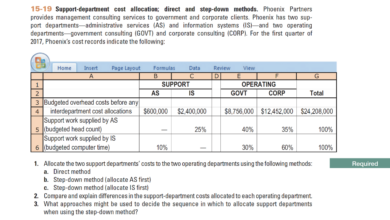What is the Point of the Lib Dems?
What is the point of the Lib Dems? That’s a question many people ask, especially given their often-pivotal, yet sometimes frustrating, role in British politics. Are they a vital centrist force, a necessary check on the power of the two major parties, or simply a party struggling to find its place? This post dives into the Liberal Democrats’ history, ideology, and electoral performance to explore exactly what they stand for and what impact they have.
We’ll unpack their core beliefs, tracing their evolution from their roots in the Liberal Party to their current position on the political spectrum. We’ll examine their successes and failures, analyzing their electoral performance and the factors that have shaped their trajectory. Finally, we’ll consider their role as potential coalition partners and their influence on the broader political landscape.
The Liberal Democrats’ Core Ideology: What Is The Point Of The Lib Dems
The Liberal Democrats occupy a unique space in the UK political landscape, advocating a blend of liberal and social democratic principles. Their ideology prioritizes individual liberty while acknowledging the importance of social justice and economic fairness. Understanding their core tenets requires examining their positions on key policy areas and contrasting them with the approaches of other major parties.
Fundamental Principles of Liberal Democrat Political Philosophy
At the heart of Liberal Democrat philosophy lies a commitment to individual liberty and human rights. This belief translates into support for civil liberties, including freedom of speech and assembly, and a strong emphasis on the rule of law. Equally crucial is their belief in social justice, aiming to create a fairer society through policies that address inequality and promote opportunity for all.
This commitment to social justice is often expressed through their support for robust social welfare programs and progressive taxation. Finally, a commitment to internationalism and global cooperation forms a significant part of their foreign policy stance.
Key Policy Positions
The Liberal Democrats’ economic policy generally favors a mixed economy, promoting both free markets and government intervention where necessary to address market failures and protect vulnerable populations. They advocate for responsible fiscal management while supporting investments in public services like education and healthcare. In social welfare, they typically champion a generous welfare state, supporting universal benefits and services while seeking to improve their efficiency and effectiveness.
For example, their proposals for universal basic income have generated significant debate. In foreign policy, they generally support strong international cooperation, advocating for multilateralism and engagement in international organizations. They often adopt a more interventionist approach than the Conservative Party, but a less interventionist approach than the Labour Party.
Comparison with Other UK Political Parties
Compared to the Conservative Party, the Liberal Democrats hold significantly different views on economic regulation, social welfare spending, and the role of the state. Conservatives generally favor lower taxes, reduced government intervention, and a smaller welfare state. In contrast to the Labour Party, the Liberal Democrats often present a more centrist approach, advocating for market-oriented reforms while maintaining a commitment to social justice.
While Labour frequently prioritizes nationalization and stricter regulation, the Liberal Democrats typically favor a more nuanced approach, seeking to balance free markets with social responsibility. The Green Party shares some common ground with the Liberal Democrats on environmental issues and social justice, but differs significantly on economic policy and the role of the state. The UK Independence Party (UKIP), now defunct, held diametrically opposed views on issues such as European integration and immigration.
Liberal Democrat Policy Proposals for the Next General Election
| Policy Area | Proposed Policy | Rationale | Potential Impact |
|---|---|---|---|
| Education | Increased funding for state schools, reduction of tuition fees | Improve educational attainment and reduce inequality | Improved educational outcomes, increased student debt |
| Healthcare | Increased investment in NHS, improved mental health services | Ensure access to quality healthcare for all | Reduced waiting times, improved patient outcomes |
| Climate Change | Increased investment in renewable energy, stricter environmental regulations | Combat climate change and protect the environment | Reduced carbon emissions, potential economic benefits from green technologies |
| Economy | Investment in infrastructure, support for small businesses | Stimulate economic growth and create jobs | Economic growth, job creation, potential increased national debt |
Historical Context and Evolution
The Liberal Democrats, a prominent force in British politics, didn’t emerge overnight. Their story is one of mergers, ideological shifts, and a persistent fight for influence within a two-party dominated system. Understanding their history is crucial to grasping their current platform and future aspirations. Their journey reflects broader changes in British political landscape, encompassing both triumphs and setbacks.The party’s roots lie in the merger of the Liberal Party and the Social Democratic Party (SDP) in 1988.
This wasn’t a spontaneous event, but rather the culmination of decades of evolving political ideologies and strategic realignments within the British political spectrum. The SDP itself was a breakaway faction from the Labour Party in the early 1980s, disillusioned with Labour’s direction under Michael Foot. This split highlighted deep ideological fractures within the left, paving the way for the emergence of a new centrist force.
The Liberal Party’s Legacy
The Liberal Party, boasting a rich history stretching back to the 19th century, played a pivotal role in shaping British politics. Thinkers like John Stuart Mill and figures like William Gladstone championed liberal causes such as free trade, individual liberty, and limited government. However, by the mid-20th century, the party’s influence had waned significantly, overshadowed by the rise of Labour and the Conservatives.
This decline was partly due to internal divisions and the party’s struggle to adapt to the changing political landscape of post-war Britain. The legacy of the Liberal Party, however, provided a strong foundation for the future Liberal Democrats, particularly its commitment to social liberalism and a more interventionist state compared to the Conservatives.
The Formation of the Social Democratic Party (SDP) and the 1980s
The formation of the SDP in 1981, spearheaded by prominent figures like Roy Jenkins, Shirley Williams, David Owen, and William Rodgers – all disillusioned Labour MPs – marked a significant turning point. These individuals, often referred to as the “Gang of Four,” believed Labour had moved too far to the left, abandoning its centrist roots. The SDP aimed to offer a more pragmatic and centrist alternative, attracting voters from both the Labour and Conservative parties.
Their initial electoral success, while not overwhelming, was significant, demonstrating the existence of a substantial electorate receptive to a centrist approach. The SDP’s platform emphasized economic modernization, social justice, and a more European-oriented foreign policy.
So, what’s the point of the Lib Dems? For me, it’s about finding pragmatic solutions to complex issues, like environmental protection. A big question in that area is whether market-based approaches can truly make a difference, which leads me to wonder, as I was reading this article: can the voluntary carbon market save the amazon ? The answer, I suspect, informs how effective Lib Dem policies on climate change could actually be.
Ultimately, it all circles back to the core question: what is the real point of the Lib Dems in a world grappling with such urgent challenges?
The Merger and the Rise of the Liberal Democrats
The formal merger of the Liberal Party and the SDP in 1988 created the Liberal Democrats. This union aimed to consolidate the centrist vote and present a stronger challenge to the two dominant parties. The early years of the Liberal Democrats were marked by a struggle to define their identity and build a cohesive party structure. The initial years saw internal debates about policy and leadership, reflecting the diverse backgrounds of the merging parties.
Despite these internal challenges, the party gradually built a stronger organizational base and electoral presence.
Key Figures and Policy Shifts
Several figures have profoundly shaped the Liberal Democrats’ trajectory. Paddy Ashdown, leader from 1988 to 1999, is widely credited with consolidating the party and building its profile. Charles Kennedy’s leadership (1999-2006) saw the party achieve its best ever general election result in 2005. Nick Clegg’s leadership (2007-2015) was marked by the coalition government with the Conservatives, a period of significant policy influence but also considerable internal debate.
More recently, Jo Swinson and Ed Davey have led the party, navigating challenges and adapting to evolving political dynamics.The party’s platform has also undergone significant shifts. While a commitment to social liberalism has remained consistent, there have been adjustments in emphasis. Early focus on economic modernization and social justice gradually evolved, incorporating concerns about environmental sustainability and electoral reform.
The experience of the coalition government led to further internal reflection and refinement of their policy positions.
Timeline of Major Events and Policy Changes
A concise timeline illustrating key moments in the Liberal Democrats’ history would include:
- 1981: Formation of the Social Democratic Party (SDP).
- 1988: Merger of the Liberal Party and SDP to form the Liberal Democrats.
- 1990s: Growth in electoral support, challenging the two-party dominance.
- 2005: Best ever general election result under Charles Kennedy’s leadership.
- 2010-2015: Coalition government with the Conservatives under Nick Clegg’s leadership.
- 2015-Present: Continued efforts to build electoral support and shape national debates.
Electoral Performance and Influence
The Liberal Democrats’ electoral performance has been a rollercoaster ride, marked by periods of significant success and frustrating setbacks. Understanding their trajectory requires examining their vote share, seat counts, and the underlying factors influencing their support base. This analysis will explore their successes and failures, highlighting regional strongholds and the impact of coalition governments on their political standing.The Liberal Democrats’ electoral fortunes have fluctuated considerably since their formation.
So, what’s the point of the Lib Dems? For me, it’s about pragmatic solutions, and that got me thinking – what’s the use of amazing medical breakthroughs, like the ones discussed in this article what good are whizzy new drugs if the world cant afford them , if they’re only accessible to the wealthy? It highlights the need for equitable access to healthcare, a key Lib Dem policy, showing that their focus isn’t just about abstract ideals but real-world impact.
While they haven’t achieved outright government victory, their influence on British politics has been undeniable, particularly through coalition arrangements.
Seat Counts and Vote Share in Recent Elections
Analyzing the Liberal Democrats’ performance requires looking at both their share of the national vote and the number of seats they’ve secured in Parliament. In the 2019 general election, they won only 11 seats, their lowest number since 1983, achieving a vote share of just 11.5%. This represented a significant decline from their 2010 result, where they secured 57 seats and 23% of the vote, largely due to their participation in the coalition government.
The 2017 election saw a slight recovery to 12 seats and 7.4% of the vote. These figures illustrate the party’s struggle to translate national support into parliamentary representation. The data clearly demonstrates the challenges the Lib Dems face in achieving consistent electoral success.
Factors Contributing to Electoral Successes and Failures, What is the point of the lib dems
Several factors have contributed to the Liberal Democrats’ varied electoral performance. Their success in 2010, achieving their highest seat count since 1923, was largely due to tactical voting by voters seeking an alternative to a Conservative or Labour majority. However, the coalition government with the Conservatives, while allowing for some policy influence, also damaged their image among some voters who felt their key pledges were compromised.
Subsequent elections have shown the difficulty in recovering from this perceived broken promise. Furthermore, internal divisions and struggles to define a clear and consistent political identity have also hampered their electoral prospects. The party’s messaging has often been muddled, making it difficult for voters to clearly understand their position on key issues.
Regional and Demographic Support
Historically, the Liberal Democrats have enjoyed stronger support in certain regions and demographics. Southern England, particularly areas like the South West and parts of the South East, have consistently shown higher levels of Lib Dem support. Similarly, the party tends to attract support from younger voters, graduates, and those living in urban areas. However, this support is not uniform, and they have struggled to maintain a strong base in many traditional working-class areas.
So, what’s the point of the Lib Dems? It’s a question I often ponder, especially when considering the broader political landscape. It makes you think about the power dynamics within the larger parties, like the Democrats, and how easily charisma can overshadow substance, as highlighted in this article about Kamala Harris: kamala harris thrills the democrat faithfuls but what does she stand for.
Ultimately, it brings me back to the core question: what truly differentiates the Lib Dems, and do they offer a viable alternative?
Their electoral success hinges on their ability to broaden their appeal beyond these core demographics.
Impact of Coalition Governments
The 2010-2015 coalition government significantly impacted the Liberal Democrats’ policy agenda and public image. While they secured some policy wins, such as raising the income tax threshold, the experience also led to accusations of compromising their core values. This resulted in a significant loss of support in subsequent elections, highlighting the risks and rewards associated with coalition government participation.
The perception of broken promises and a dilution of their distinct political identity continues to affect their standing today.
Strengths and Weaknesses of the Party
The Liberal Democrats, a centrist party in the UK political landscape, occupy a unique space, inheriting aspects of both major parties while carving their own identity. Their strengths and weaknesses are intricately linked to this position, often arising from the same characteristics. Understanding these dynamics is crucial to grasping their electoral performance and future potential.
Key Strengths of the Liberal Democrats
The Liberal Democrats’ appeal stems from a combination of factors. They attract voters disillusioned with the perceived extremes of Labour and the Conservatives, offering a more moderate and often progressive alternative. Their strong advocacy for electoral reform resonates with those who believe the current “first past the post” system is undemocratic. Furthermore, their commitment to environmental protection and social justice attracts environmentally conscious and socially liberal voters.
Their ability to attract support from a range of demographics, including younger voters and those in urban areas, demonstrates a certain breadth of appeal. Specific policy proposals, such as their detailed plans for tackling climate change, also provide a clear and coherent alternative to the other major parties.
Significant Weaknesses Hindering the Party’s Growth
Despite their strengths, the Liberal Democrats face significant hurdles. Their consistent struggle to break through the two-party dominance highlights a lack of widespread appeal compared to Labour and the Conservatives. The party’s image can be perceived as lacking decisiveness or strength, often portrayed as being too centrist to inspire passionate support. Furthermore, their history of coalition governments, while sometimes successful in achieving policy goals, can also create an image of inconsistency and compromise, potentially alienating core supporters.
Internal divisions on key policy issues can also hinder their ability to present a unified front. The challenge of attracting sufficient funding and media attention compared to the larger parties further compounds their difficulties.
Comparison with Other UK Political Parties
Compared to Labour, the Liberal Democrats share a commitment to social justice but lack Labour’s traditional working-class base. Against the Conservatives, the Lib Dems offer a more moderate stance on economic policy and a stronger emphasis on environmental issues. However, both Labour and the Conservatives benefit from significantly greater name recognition and established party machinery, advantages that the Lib Dems continually strive to overcome.
The smaller parties, like the Greens, often outflank the Lib Dems on specific policy areas like environmentalism, while the UKIP (now Reform UK) draws support from a different segment of the electorate, those more focused on issues of national identity and sovereignty.
Visual Representation of Strengths and Weaknesses
Imagine a tightrope walker, representing the Liberal Democrats. The tightrope itself symbolizes their centrist position, requiring balance and agility. The walker’s skillful movements and deft balance represent the party’s ability to navigate complex policy debates and appeal to a diverse electorate. However, the tightrope is narrow, symbolizing their limited electoral appeal compared to the broader platforms of the larger parties.
The significant height above the ground represents the challenges they face in reaching a wider audience and overcoming the dominance of the two major parties. The precariousness of their position highlights their vulnerability to shifts in public opinion and the constant need to maintain a delicate balance to survive and thrive.
The Role of the Liberal Democrats in UK Politics
The Liberal Democrats, despite rarely winning outright general elections, have played a significant and often underestimated role in shaping British politics. Their influence stems not just from their electoral performance, but from their ability to act as a kingmaker in coalition governments and as a vital voice in the broader political debate. Their history demonstrates a consistent commitment to certain core principles, which have, at times, significantly impacted policy outcomes.The Liberal Democrats’ capacity to influence policy extends beyond their direct participation in government.
Their presence in Parliament allows them to propose amendments, scrutinise legislation, and contribute to the formation of public opinion. Their influence on the political landscape is often felt through the pressure they exert on the two major parties, forcing them to consider alternative perspectives and potentially moderate their positions. This “third way” approach, occupying a centrist space, has proven effective in shaping the national conversation on numerous occasions.
The Liberal Democrats as Coalition Partners
The Liberal Democrats have demonstrated a willingness to participate in coalition governments, most notably in the 2010-2015 coalition with the Conservative Party. This coalition, while fraught with challenges, resulted in significant policy changes, demonstrating the potential impact of the Liberal Democrats when they hold leverage within a government. Their participation in such governments often leads to compromises, but also allows them to push through elements of their agenda that might otherwise be sidelined.
The experience highlights the party’s strategic ability to navigate complex political negotiations and secure policy concessions.
Liberal Democrat Influence on Political Debate and Policy-Making
The Liberal Democrats consistently champion policies focused on social justice, economic fairness, and environmental protection. Their presence in Parliament ensures these issues remain on the national agenda, even when they are not at the forefront of the mainstream political discourse. Their contributions to debates and their active participation in parliamentary committees help shape the legislative process, influencing the wording and substance of bills.
This sustained pressure, even outside of government, can lead to policy changes that reflect their priorities.
Impact of Liberal Democrat Participation in Government Coalitions on Policy Outcomes
The 2010-2015 coalition government provides a clear example of the Liberal Democrats’ influence on policy outcomes. While the coalition’s success was debated, several key policies directly reflect the Liberal Democrats’ priorities. For instance, the increase in the income tax threshold and the introduction of pupil premium funding for disadvantaged students were widely attributed to Liberal Democrat influence. These successes highlight their ability to translate their political capital into tangible policy changes, even within the context of a coalition government.
Examples of Policies Influenced by the Liberal Democrats
The following bullet points illustrate specific policy areas where the Liberal Democrats have had a demonstrable impact:
- Increased Income Tax Threshold: The coalition government raised the personal income tax allowance, benefiting lower and middle-income earners – a key Liberal Democrat policy objective.
- Pupil Premium: Additional funding was allocated to schools to support disadvantaged students, reflecting the Liberal Democrats’ commitment to educational equality.
- Same-Sex Marriage: The Liberal Democrats were strong proponents of legalizing same-sex marriage, and their support was crucial in securing its passage into law.
- Increased Spending on Mental Health Services: Although not always directly attributable, increased funding in this area has been a long-standing Liberal Democrat policy objective, and their presence in government may have contributed to its prioritisation.
So, what is the point of the Lib Dems? The answer, it turns out, isn’t simple. They’re a party with a rich history and a complex identity, constantly navigating the challenges of a two-party dominated system. While their electoral success has been inconsistent, their influence on policy and the political debate is undeniable. Whether you agree with their ideology or not, understanding their role is crucial to understanding British politics as a whole.
Their ongoing struggle to define their place in the political landscape is a fascinating case study in the complexities of coalition politics and the ever-shifting sands of public opinion.





